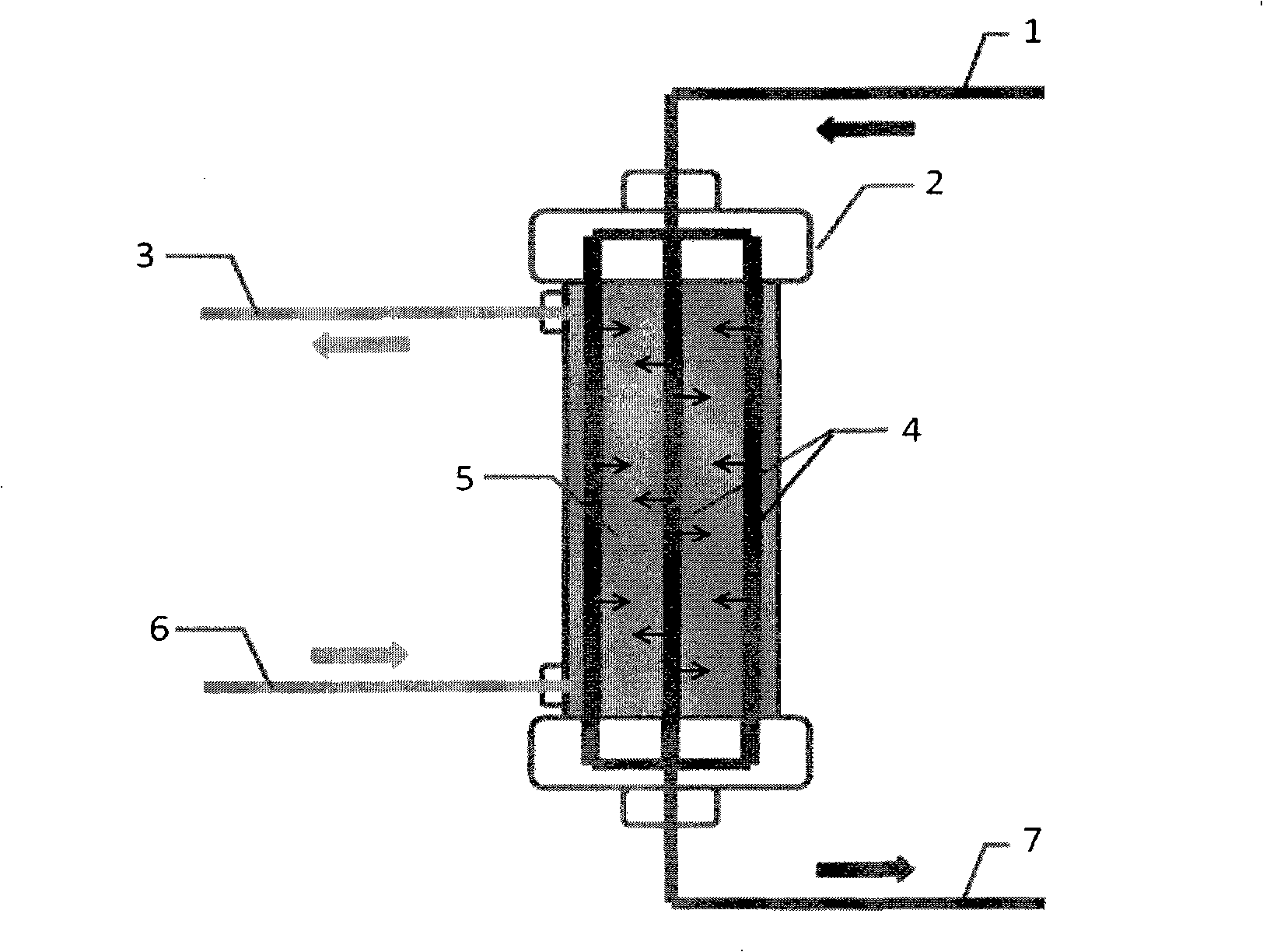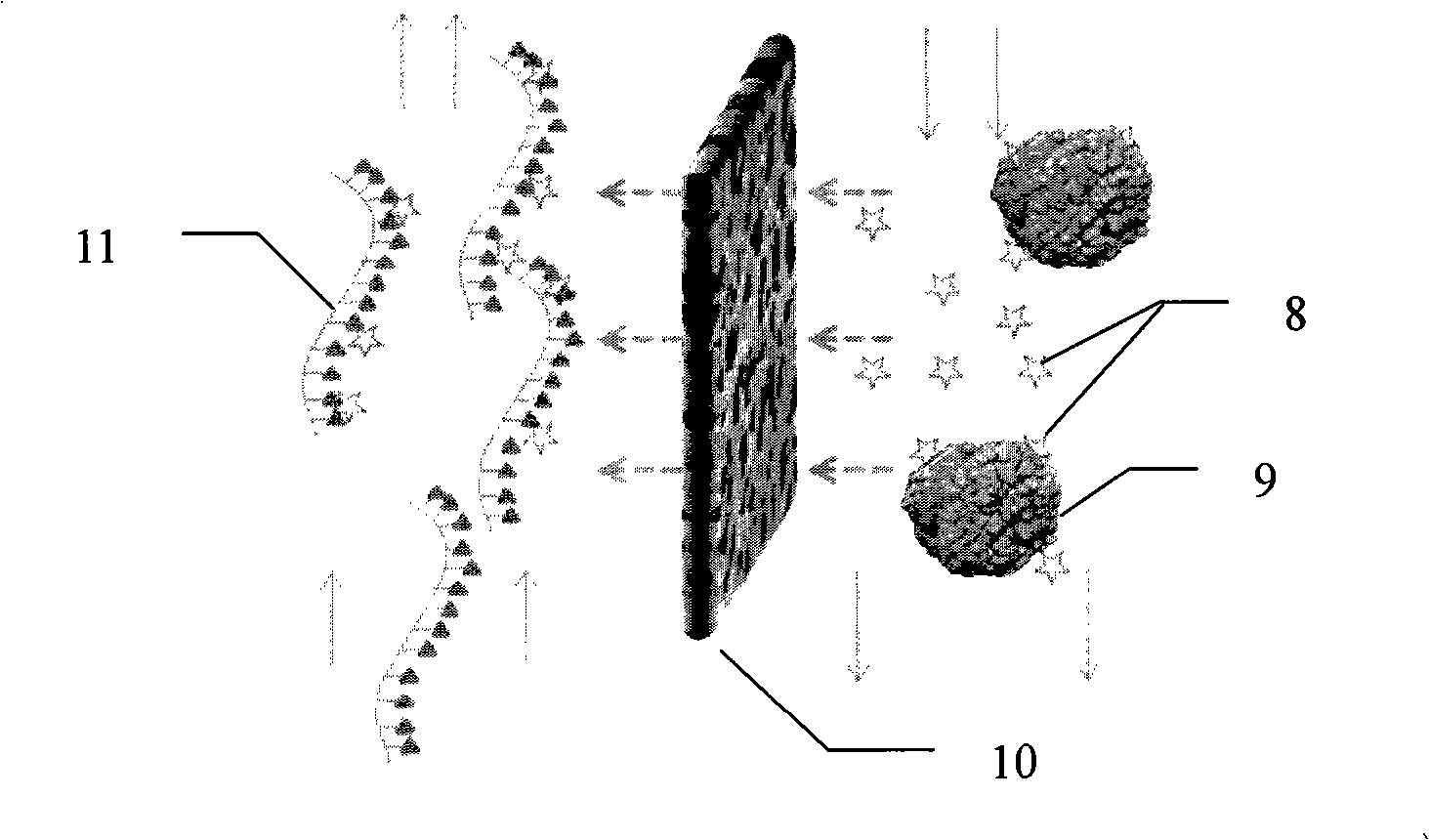Water-soluble polymer adsorption material coupling cyclodextrin and uses thereof
An adsorption material, cyclodextrin technology, applied in the field of biomedical materials, can solve the problems of high treatment cost, reduced pathogenic factor removal ability, high cost, avoid non-specific adsorption, improve blood compatibility, and fast adsorption speed Effect
- Summary
- Abstract
- Description
- Claims
- Application Information
AI Technical Summary
Problems solved by technology
Method used
Image
Examples
Embodiment 1
[0028] Example 1. Synthesis of water-soluble starch coupled with β-cyclodextrin and its application in blood purification
[0029] The first step is to prepare the adsorbent material
[0030] Weigh 10 grams of starch with a viscosity average molecular weight ranging from 400 to 500KD and put it into a flask, add 100ml of 1mol / L sodium hydroxide, 5ml of dimethyl sulfoxide, and 3ml of epichlorohydrin to it, and then react at 30°C After 5 hours, epoxy-activated starch was obtained. Add 3 grams of β-cyclodextrin to the reaction system, react
[0031]
[0032] night. After filtering, washing and drying, the product is obtained. The reaction formula is as follows:
[0033] n=2469~3087 (corresponding to the starch molecular weight range of 400~500KD).
[0034] The second step, the preparation of dialysis adsorption solution
[0035] 1 gram of water-soluble starch coupled with β-cyclodextrin was dissolved in 1000 ml of lactate dialysate to prepare an adsorption dialysate with...
Embodiment 2~6
[0039] Examples 2-6. Other polysaccharide derivatives containing hydroxyl groups and synthetic polymers react with substituted β-cyclodextrins to prepare adsorption materials and their applications
[0040] Using the same reaction method, the reaction in Example 1 is also applicable to coupling substituted β-cyclodextrin on hydroxymethyl starch, hydroxyethyl starch, hydroxypropyl starch, dextran and polyvinyl alcohol. Their consumption and reaction conditions are identical with embodiment 1. The corresponding reactants and product structures are shown in the table below. Since their common feature is that there are cyclodextrin groups on the polymer backbone, they have the same function.
[0041]
[0042] The water-soluble polymer coupled with cyclodextrin synthesized by the above method was prepared into an adsorption dialysate by the same preparation method as in Example 1, and applied to simulated adsorption dialysis experiments in vitro. Similar effects were obtained ...
Embodiment 7
[0043] Example 7. Synthesis and application of water-soluble chitosan coupled with sulfobutyl-β-cyclodextrin
[0044] The first step is to prepare the adsorbent material
[0045] Weigh 10 grams of chitosan with a viscosity average molecular weight ranging from 90 to 100KD and put it into a flask, add 100ml of 1mol / L sodium hydroxide, 5ml of dimethyl sulfoxide, and 3ml of epichlorohydrin to the flask, and then heat it at 30°C Under reaction for 5 hours, epoxy-activated chitosan was obtained. Add 3 g of sulfobutyl-β-cyclodextrin to the reaction system and react overnight. After filtering, washing and drying, the product is obtained. The reaction formula is as follows:
[0046]
[0047] n=559-622 (corresponding to chitosan molecular weight range of 90-100KD).
[0048] The second step, the preparation of dialysis adsorption solution
[0049] 1 gram of water-soluble chitosan coupled with sulfobutyl-β-cyclodextrin was dissolved in 100 ml of acetate dialysate to prepare an ad...
PUM
 Login to View More
Login to View More Abstract
Description
Claims
Application Information
 Login to View More
Login to View More - R&D
- Intellectual Property
- Life Sciences
- Materials
- Tech Scout
- Unparalleled Data Quality
- Higher Quality Content
- 60% Fewer Hallucinations
Browse by: Latest US Patents, China's latest patents, Technical Efficacy Thesaurus, Application Domain, Technology Topic, Popular Technical Reports.
© 2025 PatSnap. All rights reserved.Legal|Privacy policy|Modern Slavery Act Transparency Statement|Sitemap|About US| Contact US: help@patsnap.com



